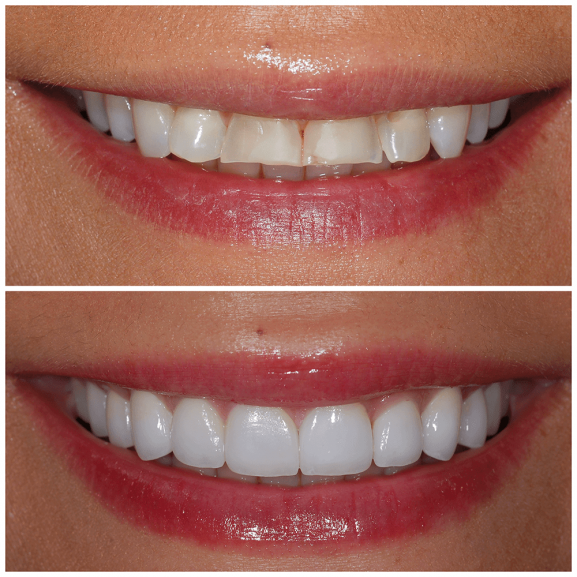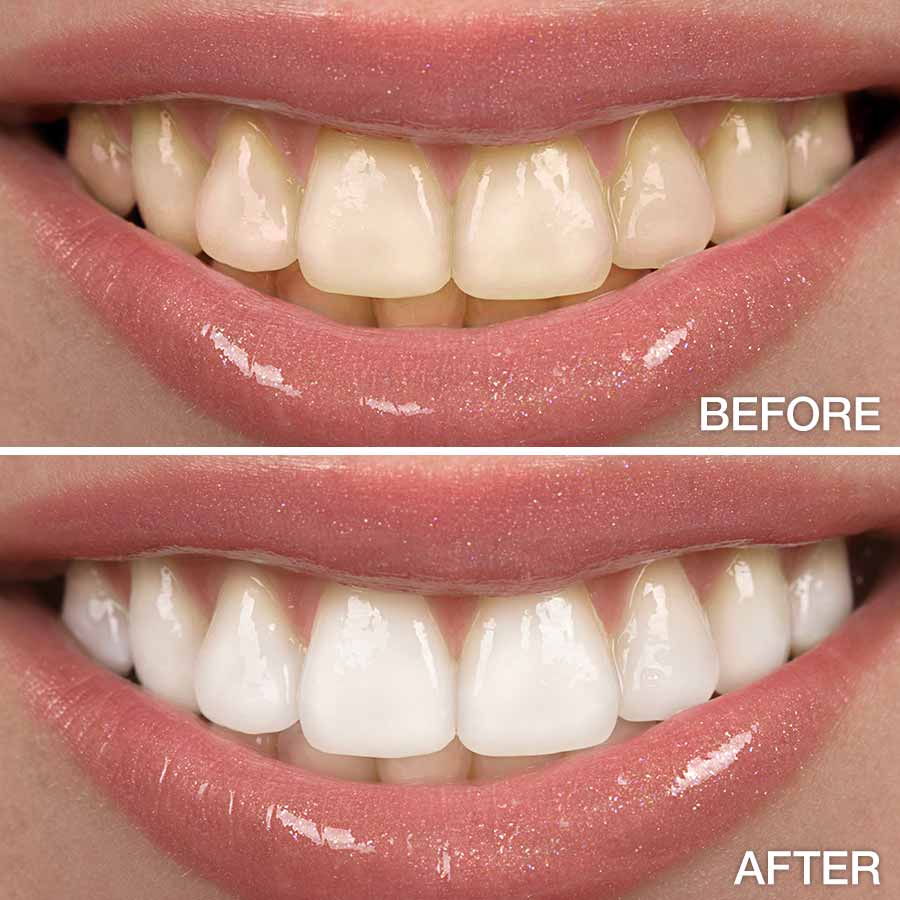[Recopilating this info took me a month of reading papers and studies done for dentists, coupled with very thorough Instagram searches and watching seminars from top tier ceramists. There's nothing wrote in depth about veneers and the market itself is shady af, I hope this helps you to ascend].
First of all, if you have a malocclusion, a narrow smile, crowded teeth, etc, you have to fix it first, non negotiable. There are plenty of threads here that have everything you need with regards to jaw surgery, palate widening or even surgically assisted orthodontics. This guide is only useful if you already have a class 1 occlusion, non recessed jaw and adequate palate width, but not good tooth enamel and as such need veneers or crowns (or you only need braces to straighten your teeth and widen your dental arch a little bit, and also contemplate veneers to improve your teeth's appeareance, but you don't have jaw recession or a narrow palate as mentioned before).
IMPORTANT: veneers are made by ceramists, not dentists, and the ceramist skills trumps the material used. A top tier ceramist can make EMAX or even indirect composite veneers look much better than porcelain made by a mediocre ceramist.
What type of veneer/crown materials exist?
- Metal made crowns: this look like shit and are obsolete, avoid at all costs.
- Zirconia made crowns and veeners: this are the highest strenght available and replaced metal made crowns. They are more suitable for molars, their strenght is twice as much as the natural tooth enamel. So, why not do a full mouth restoration out of zirconia? Because it has the lowest translucency and looks very artificial, so it is the worst looking material possible. The typical Hollywood/Instagram artificial smile is made with zirconia most of the time:
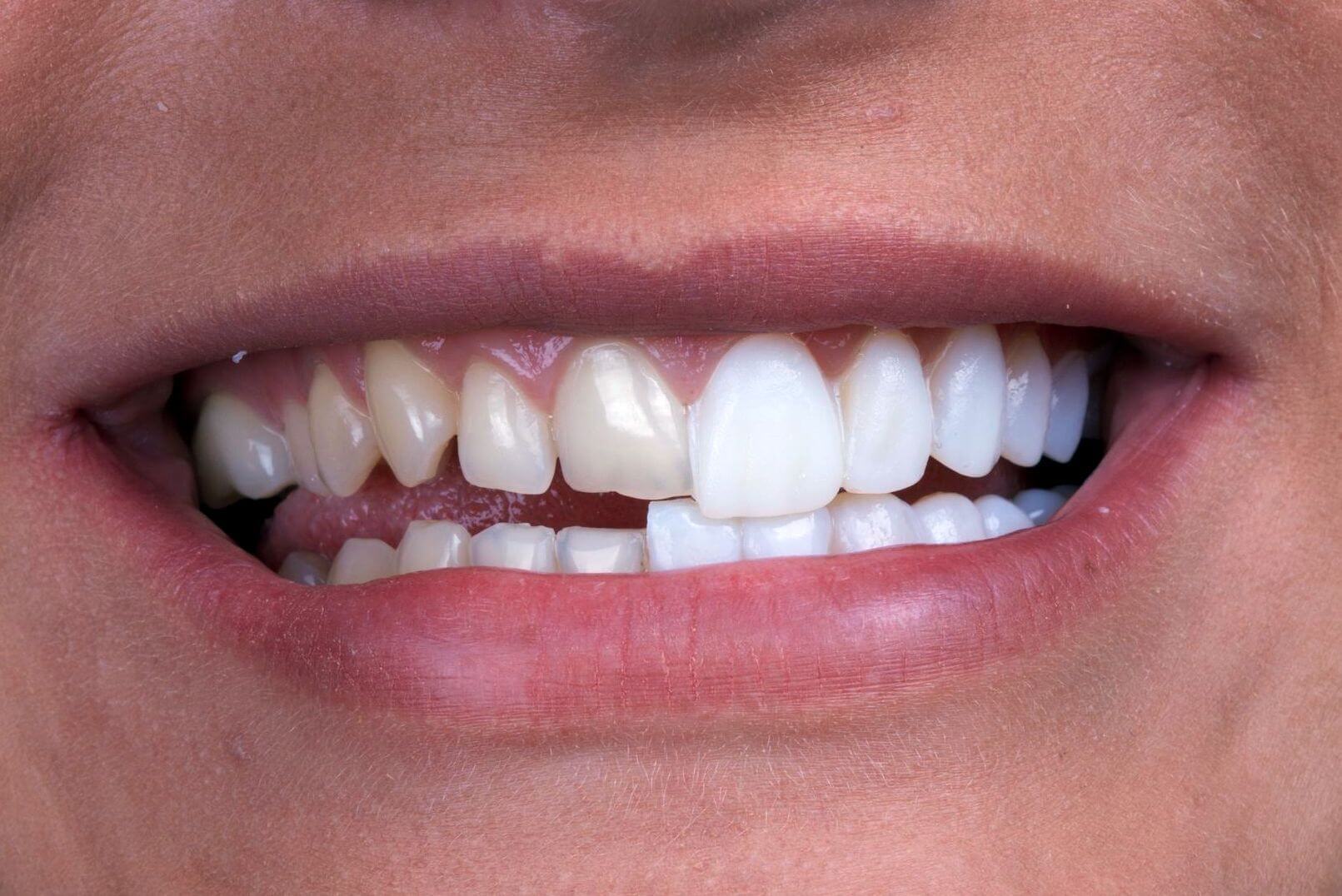
- Lithium disilicate veneers and crowns (EMAX): this is very popular and has the same strenght as tooth enamel in monolithic form. It looks better than zirconia but not as good as natural teeth. It is the best material for molars, because it is more aesthetic than zirconia and matches the natural enamel strenght. It can be stratified with porcelain on top to look better and resemble natural teeth a lot more. The downside is that it looses strenght and is not suitable for back molars like before. The higher the translucency and aesthetics, the lower the strenght, this is a consistent tradeoff. The norm with EMAX restorations usually is to have monolithic, non stratified crowns on molars, and stratified, higher aesthetics but lower strenght veneers/crowns in the front.
EMAX veneers stratified with porcelain on top:

- Composite veneers (direct and indirect): this are the cheapest possible veneer, and can be done direct (the dentist does it in the same visit) or indirect (a mold of your teeth is send to a lab where they make the veneers). The very best option, of course, is to have a top tier ceramist make you indirect composite veneers. Don't be fooled by their price, for the right patient, they mog EMAX. Downside is that they last half as much as EMAX or Porcelain, and stain with tobacco or tea (not that you should be smoking but is good to know) and have a very low strenght. This is an example of indirect composite veneers done by a great ceramist:


As you can see, he already have very good tooth enamel and color, but weird central incisors. Indirect composite can give high translucency and mimic natural enamel to a large degree, and because he already had a great starting point, he saved lots of money and got a mogger result.
- Off the shelf porcelain veneers (Lumineers, Empress): Don't get me wrong, this are still custom made to fit your teeth, but not as much as other alternatives that I'll mention. This type of porcelain veneer has higher translucency and aesthetics than EMAX (monolithic or stratified), but is not as strong, so they can't be used for molars. They are sold as no prep veneers, but you have to be careful with this, because most veneers normally need some take some teeth away to look natural and avoid a bulky look. While we should strive to preserve as much teeth as possible, we shouldn't fall for the always minimally invasive meme and get a subpar result too. This is one example I found, as you can see, it looks good but not much better than EMAX. IMO well done composite mogs this, and if you have cash, you should avoid it and skip to the next two alternatives I'm going to talk about.
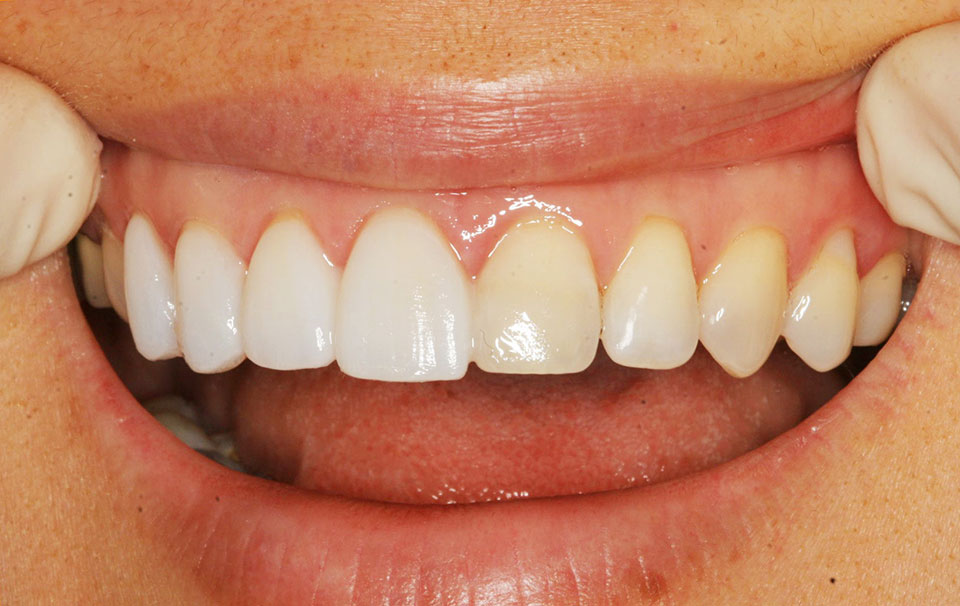
- Fully custom feldspathic porcelain veneers (CAD/CAM made): OK, as the name implies, this are fully custom made for you. Feldspathic porcelain is the material most similar to teeth enamel and the one with the highest aesthetics, period. CAD/CAM veneers and crowns designed with software using a microcamera to take thousands of pictures of your mouth, print a realistic mold and send it to a lab, where a technician CNC mills a block of porcelain until it obtains the desired shape, and a ceramist hand paints it to obtain a natural result. With softwares like Smile Cloud, you can even see how the smile will look on you, both static and in motion (!). The same technique can be used for EMAX and Zirconia too, in fact, is much more common to have fully custom EMAX veneers with this method, but you can get feldspathic porcelain too.
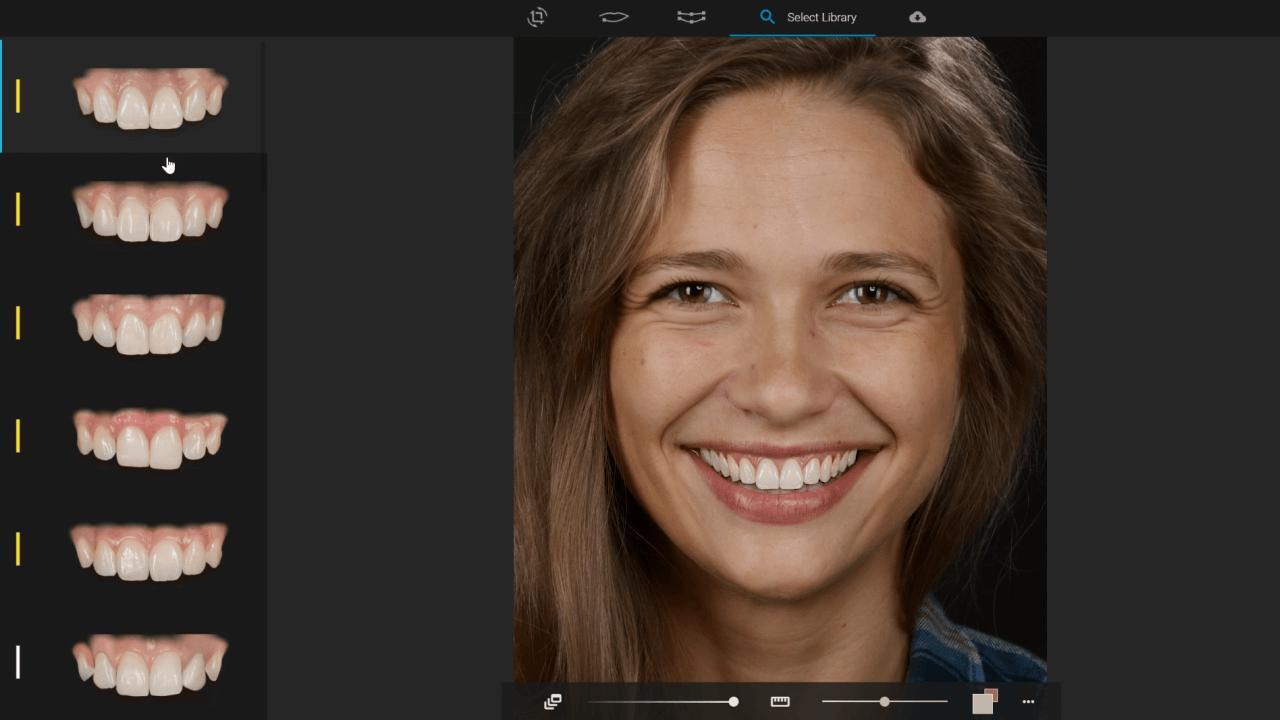
So, this mogs brutally and that's it? Not so fast, being milled from a single block, they still lack translucency and aesthetics compared to this alternative, which mogs so hard it will shock you.
- Fully custom, hand made on platinum foil or refractory method feldspathic porcelain veneers: this methods are the old school way of doing porcelain veneers, and by far the most aesthetic if done by a good ceramist. The porcelain, in powder state, is layered by hand by the ceramist until the desired shape and color is obtained. The only con is that they are weaker than tooth enamel, so they are not good for the molars. You can still get the 10 anterior teeth and the sides of your molars veneered (if you have a true 12 tooth smile) with it.
Words don't describe how hard this mogs, so I'm going to leave you with this instead:
We haven't touched on inlays and outlays, which are like partial crowns. If your teeth is not that damaged to warrant a crown, you can (and should) have an inlay or outlay, made with EMAX if it's in the molars, or with indirect composite or hand made porcelain if you want if it is in the front teeth. These are also cheaper than veneers and crowns by around 30%.
Normally, in Spain, this would be the prices per tooth:
- Indirect composite: 200-300€
- EMAX: 500-700€ (CAD-CAM, stratified or not)
- Lumineers/Empress: 500-700€
- CAD/CAM Porcelain: 500-700€
- Hand made Porcelain: 700-1000€
Hand made porcelain by a world class ceramist can cost up to 2000-2500€ per tooth (see Dr_Averin recent IG posts ).
).
TL;DR: you either have this smile or nothing, no excuses other than money:

First of all, if you have a malocclusion, a narrow smile, crowded teeth, etc, you have to fix it first, non negotiable. There are plenty of threads here that have everything you need with regards to jaw surgery, palate widening or even surgically assisted orthodontics. This guide is only useful if you already have a class 1 occlusion, non recessed jaw and adequate palate width, but not good tooth enamel and as such need veneers or crowns (or you only need braces to straighten your teeth and widen your dental arch a little bit, and also contemplate veneers to improve your teeth's appeareance, but you don't have jaw recession or a narrow palate as mentioned before).
IMPORTANT: veneers are made by ceramists, not dentists, and the ceramist skills trumps the material used. A top tier ceramist can make EMAX or even indirect composite veneers look much better than porcelain made by a mediocre ceramist.
What type of veneer/crown materials exist?
- Metal made crowns: this look like shit and are obsolete, avoid at all costs.
- Zirconia made crowns and veeners: this are the highest strenght available and replaced metal made crowns. They are more suitable for molars, their strenght is twice as much as the natural tooth enamel. So, why not do a full mouth restoration out of zirconia? Because it has the lowest translucency and looks very artificial, so it is the worst looking material possible. The typical Hollywood/Instagram artificial smile is made with zirconia most of the time:

- Lithium disilicate veneers and crowns (EMAX): this is very popular and has the same strenght as tooth enamel in monolithic form. It looks better than zirconia but not as good as natural teeth. It is the best material for molars, because it is more aesthetic than zirconia and matches the natural enamel strenght. It can be stratified with porcelain on top to look better and resemble natural teeth a lot more. The downside is that it looses strenght and is not suitable for back molars like before. The higher the translucency and aesthetics, the lower the strenght, this is a consistent tradeoff. The norm with EMAX restorations usually is to have monolithic, non stratified crowns on molars, and stratified, higher aesthetics but lower strenght veneers/crowns in the front.
EMAX veneers stratified with porcelain on top:

- Composite veneers (direct and indirect): this are the cheapest possible veneer, and can be done direct (the dentist does it in the same visit) or indirect (a mold of your teeth is send to a lab where they make the veneers). The very best option, of course, is to have a top tier ceramist make you indirect composite veneers. Don't be fooled by their price, for the right patient, they mog EMAX. Downside is that they last half as much as EMAX or Porcelain, and stain with tobacco or tea (not that you should be smoking but is good to know) and have a very low strenght. This is an example of indirect composite veneers done by a great ceramist:


As you can see, he already have very good tooth enamel and color, but weird central incisors. Indirect composite can give high translucency and mimic natural enamel to a large degree, and because he already had a great starting point, he saved lots of money and got a mogger result.
- Off the shelf porcelain veneers (Lumineers, Empress): Don't get me wrong, this are still custom made to fit your teeth, but not as much as other alternatives that I'll mention. This type of porcelain veneer has higher translucency and aesthetics than EMAX (monolithic or stratified), but is not as strong, so they can't be used for molars. They are sold as no prep veneers, but you have to be careful with this, because most veneers normally need some take some teeth away to look natural and avoid a bulky look. While we should strive to preserve as much teeth as possible, we shouldn't fall for the always minimally invasive meme and get a subpar result too. This is one example I found, as you can see, it looks good but not much better than EMAX. IMO well done composite mogs this, and if you have cash, you should avoid it and skip to the next two alternatives I'm going to talk about.

- Fully custom feldspathic porcelain veneers (CAD/CAM made): OK, as the name implies, this are fully custom made for you. Feldspathic porcelain is the material most similar to teeth enamel and the one with the highest aesthetics, period. CAD/CAM veneers and crowns designed with software using a microcamera to take thousands of pictures of your mouth, print a realistic mold and send it to a lab, where a technician CNC mills a block of porcelain until it obtains the desired shape, and a ceramist hand paints it to obtain a natural result. With softwares like Smile Cloud, you can even see how the smile will look on you, both static and in motion (!). The same technique can be used for EMAX and Zirconia too, in fact, is much more common to have fully custom EMAX veneers with this method, but you can get feldspathic porcelain too.

So, this mogs brutally and that's it? Not so fast, being milled from a single block, they still lack translucency and aesthetics compared to this alternative, which mogs so hard it will shock you.
- Fully custom, hand made on platinum foil or refractory method feldspathic porcelain veneers: this methods are the old school way of doing porcelain veneers, and by far the most aesthetic if done by a good ceramist. The porcelain, in powder state, is layered by hand by the ceramist until the desired shape and color is obtained. The only con is that they are weaker than tooth enamel, so they are not good for the molars. You can still get the 10 anterior teeth and the sides of your molars veneered (if you have a true 12 tooth smile) with it.
Words don't describe how hard this mogs, so I'm going to leave you with this instead:
We haven't touched on inlays and outlays, which are like partial crowns. If your teeth is not that damaged to warrant a crown, you can (and should) have an inlay or outlay, made with EMAX if it's in the molars, or with indirect composite or hand made porcelain if you want if it is in the front teeth. These are also cheaper than veneers and crowns by around 30%.
Normally, in Spain, this would be the prices per tooth:
- Indirect composite: 200-300€
- EMAX: 500-700€ (CAD-CAM, stratified or not)
- Lumineers/Empress: 500-700€
- CAD/CAM Porcelain: 500-700€
- Hand made Porcelain: 700-1000€
Hand made porcelain by a world class ceramist can cost up to 2000-2500€ per tooth (see Dr_Averin recent IG posts
TL;DR: you either have this smile or nothing, no excuses other than money:

Last edited:




